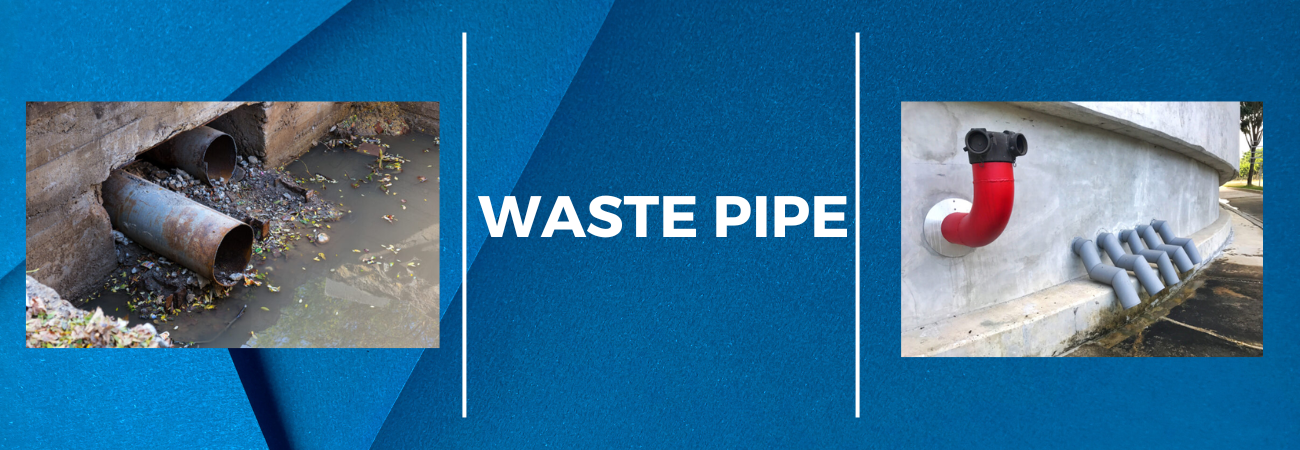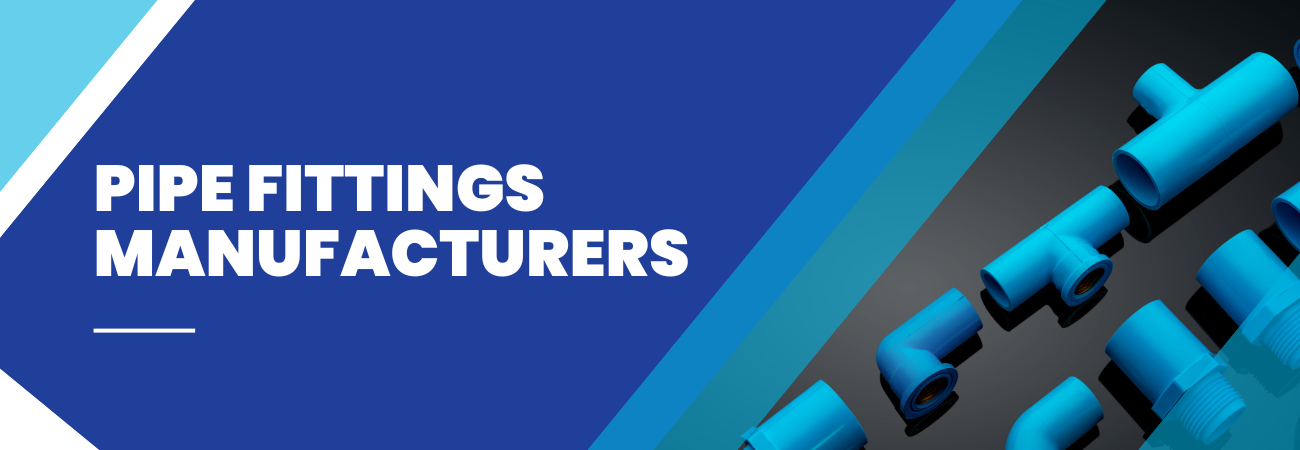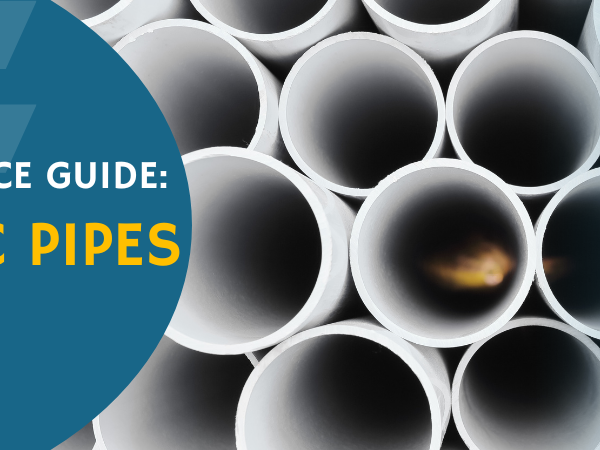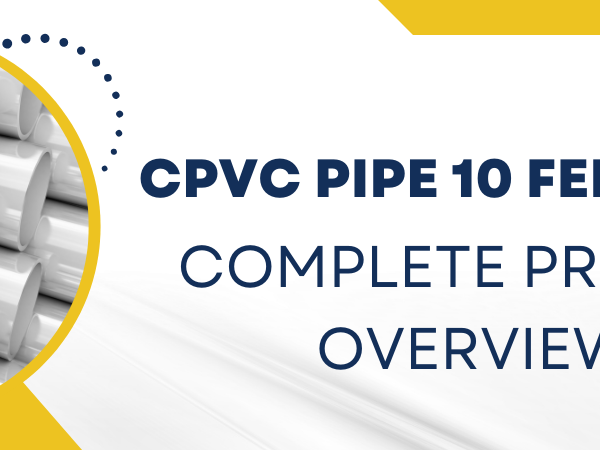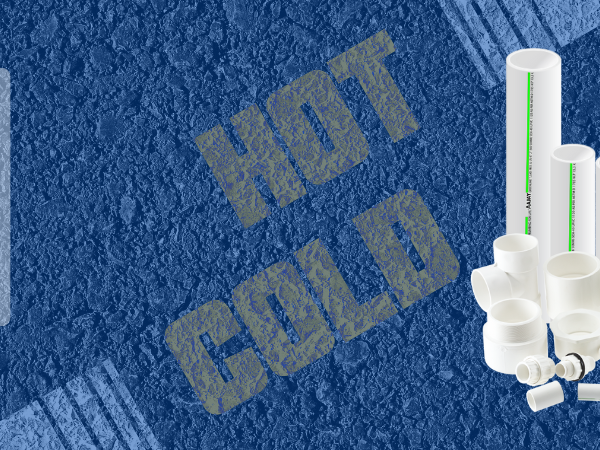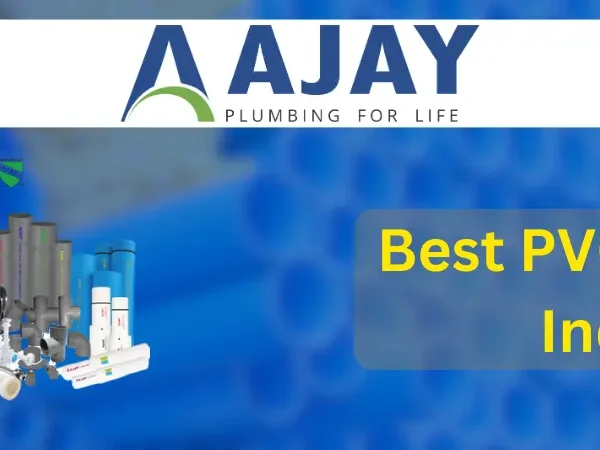Introduction
What are Plastic pipe fittings
Plastic pipe fittings are plastic pipe connectors used in the plumbing & drainage system to join multiple pipes of the same or different sizes either to lengthen the pipeline or change the direction of flow. This regulates the water flow in the plumbing system. Based on their nature, they are either used to combine, divert, or reduce the water flow and come in a variety of sizes and shapes. Plastic water pipe fittings are of a huge demand for any piping and plumbing systems used in an industrial, commercial, and residential application.
Types of plastic pipe fittings
PVC/UPVC pipe fittings – Polyvinyl Chloride (PVC) or Unplasticized Polyvinyl Chloride (UPVC) pipe fittings are used as pipe connectors for all plumbing & drainage purposes in residential & commercial buildings. UPVC pipes and fittings are suitable for cold water distributions.
MDPE pipe fittings – Medium Density Polyethylene (MDPE) fittings are durable and are used for Water & Gas distribution. They are suitable for high-pressure lines.
CPVC pipe fittings – Chlorinated Polyvinyl Chloride (CPVC) pipe fittings are used in residential, commercial, hot & cold potable water distribution systems. They are widely used in fire suppression systems as well.
PPR pipe fittings – Polypropylene Random Copolymer fittings are ideal for hot and cold potable water piping in residential, commercial, and industrial installations. They can be used for transferring water, sanitary liquids, compressed air, and aggressive chemicals.
PEX pipe fittings – Cross-linked polyethylene also known as PEX fittings are used in building pipework systems, domestic water piping, and hydronic radiant heating and cooling systems.
PERT pipe fittings – PERT or Polyethylene of Raised Temperature fittings are very easy to use and have a good melting connection.

Application of Plastic Fittings
Drainage plastic fittings are used for connecting drainage pipes and consist of Elbows, Tees, Cross Tee, Y, Double Y, plugs, cleanouts and traps. They connect pipes to ensure the smooth flow of wastewater in the drainage.
Plastic pipe fittings are also used to transport extremely hazardous chemical materials and waste. These are resistant to corrosion from chemicals and have longer life than metal piping.
Pipe fittings are used to connect sections of pipes, tubes, or hoses in pressurized air or gas systems. Pneumatic fittings have tight seals and lower pressure requirements when compared to hydraulic fittings.
Pressure applications are those that involve transporting liquids under pressure. This includes municipal and domestic water supply and transportation of liquids in industrial applications. Plastic pipe fittings are most suitable for all pressure applications.
Plastic water pipe fittings are undoubtedly one of the important components of the plumbing system. They are used to connect straight pipes or sections of the tube inside homes and commercial buildings to facilitate water supply. Pipe fittings like elbow, tee, socket, and reducer are used to change the direction of the water flow with a reduced or equal size.
PVC pipe fittings are widely preferred for non-pressure applications because of their non-corrosive nature, easy installation and extremely long life. The life of a PVC pipe and fittings in non-pressure applications is far better than the metal counterparts. Non pressure applications generally include drainage.
TYPES OF PLASTIC PIPE CONNECTORS OR PLASTIC PIPE JOINTS

PLASTIC PIPE ELBOW JOINT
Elbow connectors change the direction of flow between the two pipes connected. Common elbows found in the market have 90degree & 45degree bends. Elbow fittings are joined together to move around obstructions in the pipe run.

PLASTIC PIPE SOCKET OR COUPLING
A coupler is a very short length of pipe or tube, with a socket at one or both the ends that let the pipes to be joined. Coupling is used to repair a broken or leakage pipe.

PLASTIC END CAP
Cap fittings cover the end of the pipe to stop the flow of gas or water. They are used at the endpoint of the piping system and are also used in piping headers for future connections.

PLASTIC PIPE FLANGE
Flange fittings are flat and round to create a tight seal with bolts and clamps. These types of pipe fittings are used when pipes are passed through walls, ceilings, and floors.

PLASTIC PIPE UNION
Just like couplings, union fittings also connect two similar pipes. There are three pieces in a union namely a nut, a female end, and a male end. As soon as the female and the male end are joined, the nuts provide the pressure needed to seal the joint.

PLASTIC VALVES
Valves are used to adjust the flow of fluids. There are two types of valves. Throttling, non-return, and isolation. Throttling valves control the pressure and amount of liquid flowing in the pipe. Non-return valves also are known as check valves that allow the liquid to flow in one direction.

PLASTIC ADAPTORS
Plastic adaptors are pipe fittings used to connect pipes that are of different types. Because an adaptor can be male or female on one end. In case the ends are non-threaded, they can be welded, soldered, or glued to the pipe.Plastic adaptors are widely used in different types of water systems.

PLASTIC BUSHING
Plastic bushings are called as reducer bushings and are used to connect two pipes of different sizes. The larger diameter of the bushing fits inside the larger pipe and the smaller end of the bushing fits inside the smaller pipe.

PLASTIC PIPE CLIPS
Also referred to as pipe clamps, pipe clips are circular or semicircular brackets used to fix pipes in position and come in various fastening types. Pipe clips come in a wide range of sizes and diameters.

PLASTIC PIPE REDUCER FITTINGS
Plastic pipe reducer fittings are used to connect large diameter pipes to smaller diameter pipes. A reducer changes the pipe size to meet the hydraulic flow requirements of the system.

PLASTIC PIPE TEE OR WYE JOINT
Tees & Wyes fittings are used to connect three pieces of pipes. Tees have one inlet and two outlets that resemble the right angle (90 degrees) in the shape of T, whereas wyes pipe fittings are shaped like a “Y” with two inlets coming together at 45 degrees into a single outlet in the drainage applications. It can be used to combine the flow from two inlets to one outlet as well.
Pipe Fitting Type Based On Jointing System
Threaded joint – It is the mechanical joint between threaded pipes or between a threaded pipe and threaded fitting.
Soldering – It is a joining process used to join together different types of metals by melting solder.
Metal Heat welding – It is a fabrication process that joins metals or thermoplastics by using high heat to melt the parts together.
Plastic heat welding- It is the process of creating a molecular bond between two thermoplastics.
Solvent cement – It is either available in the liquid or gel forms. They are used to join PVC pipes and other types of plastics. Solvent cement is very convenient to use.
Rubber ring – In this technique, a fluid seal is provided by compressing a rubber ring housed in the socket of a pipe or fitting when the spigot is passed into the socket.
Compression – This technique is used to connect two pipes or a pipe and a fixture or valve.

For any queries, contact the plumbing experts at Ajay pipes on the Toll Free No. : 1800-11-4050 or via email at our email address info@ajaypipes.com






